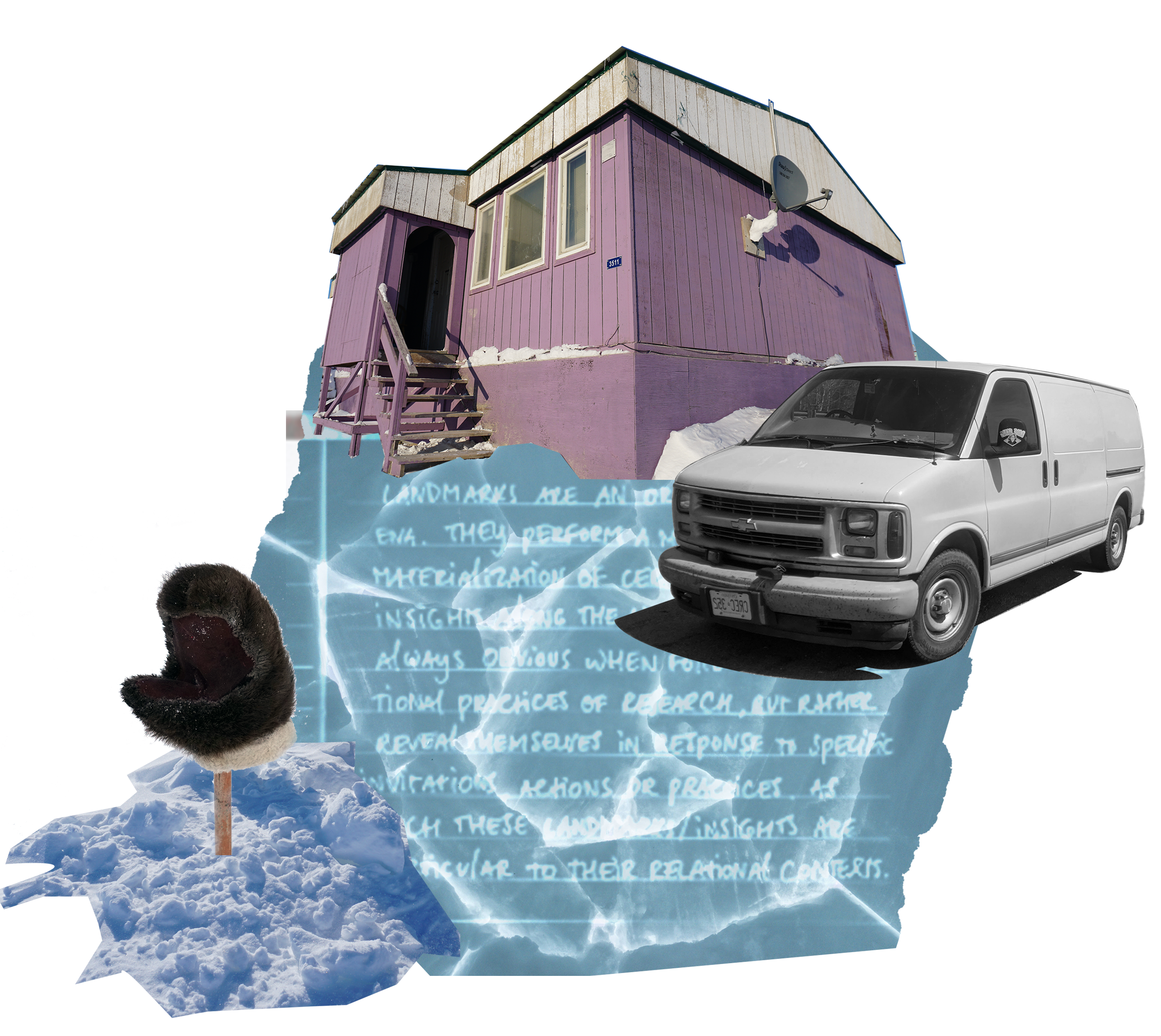The Wreck-site: Difference between revisions
No edit summary |
No edit summary |
||
| Line 1: | Line 1: | ||
[[File:Landmark.png|thumb]] | [[File:Landmark.png|thumb]] | ||
Gjoa Haven holds the wrecks of HMS Terror and Erebus, material traces of long-standing Inuit-Qablunaat (non-Inuit) encounters. These sites are not static ruins but shifting spaces where history, knowledge, and materiality intertwine—whether through the repurposing of shipwood into tools or broader structures like Inuit Land Claim Agreements. The wrecksite, like my research, is shaped by layered histories and ongoing transformation. | |||
Like a wreck, my research is shaped by seasonal forces—shifting ice and weather alter what can be known. But wrecks do not just decay; they become foundations for new growth. Similarly, the BearWatch project entangles science-based conservation, Inuit self-determination, and co-management, making research itself a contested space. It is both a site of "becoming reef," opening new possibilities, and "becoming heritage," embedded in power-laden histories that shape its course. | |||
<div class="next_choice">See how, a process of wayfaring reconceptualizes the idea of "final workshops" from projects coming to an end, towards being stories-so-far that are always also another point of beginning. </div> | <div class="next_choice">See how, a process of wayfaring reconceptualizes the idea of "final workshops" from projects coming to an end, towards being stories-so-far that are always also another point of beginning. </div> | ||
<span class="return to cut 3 link" data-page-title="Fall 2022 Gjoa Haven" data-section-id="3" data-encounter-type="return">[[Fall 2022 Gjoa Haven#Another Point of Beginning|Turn to "Another Point of Beginning"]]</span> | <span class="return to cut 3 link" data-page-title="Fall 2022 Gjoa Haven" data-section-id="3" data-encounter-type="return">[[Fall 2022 Gjoa Haven#Another Point of Beginning|Turn to "Another Point of Beginning"]]</span> | ||
Revision as of 17:50, 2 March 2025

Gjoa Haven holds the wrecks of HMS Terror and Erebus, material traces of long-standing Inuit-Qablunaat (non-Inuit) encounters. These sites are not static ruins but shifting spaces where history, knowledge, and materiality intertwine—whether through the repurposing of shipwood into tools or broader structures like Inuit Land Claim Agreements. The wrecksite, like my research, is shaped by layered histories and ongoing transformation.
Like a wreck, my research is shaped by seasonal forces—shifting ice and weather alter what can be known. But wrecks do not just decay; they become foundations for new growth. Similarly, the BearWatch project entangles science-based conservation, Inuit self-determination, and co-management, making research itself a contested space. It is both a site of "becoming reef," opening new possibilities, and "becoming heritage," embedded in power-laden histories that shape its course.
